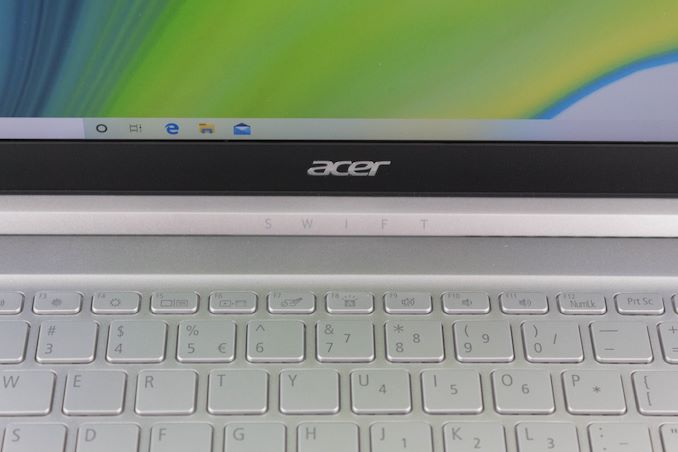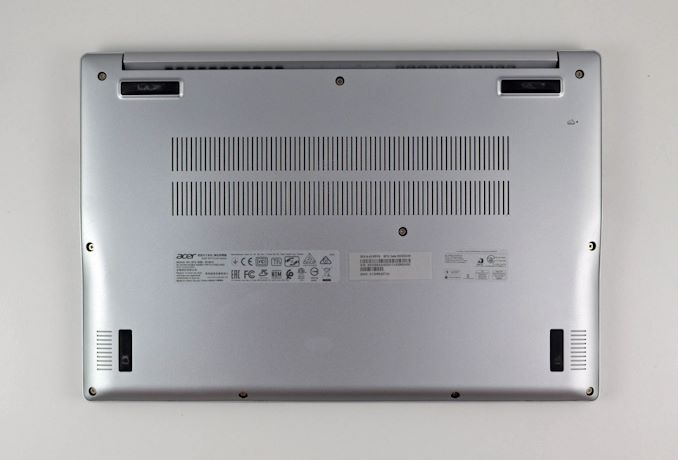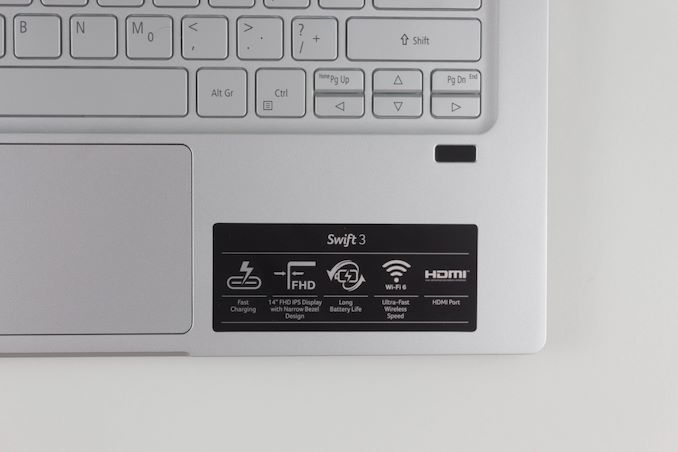The Acer Swift 3 SF314 Notebook Review: Swift Gets Swifter With Ryzen 4000
by Brett Howse & Andrei Frumusanu on May 5, 2020 8:00 AM ESTFinal Words
Although there are a few shortcomings on the new for 2020 Acer Swift 3, overall the company has done an excellent job on a lot of the key areas of this notebook. Considering the price of just $649, including 8 GB of RAM and a 512 GB NVMe SSD is very welcome, and having a processor that offers as much performance as the AMD Ryzen 7 4700U is the icing on the cake. The fact that everything is wrapped up in an attractive, sturdy aluminum shell really lets the Swift 3 punch above its weight.
AMD’s Ryzen 7 4700U is likely to be one of the more popular offerings in notebooks, and AMD has delivered. The new Zen 2 cores are much more competitive, and AMD has crammed eight cores onto this 15-Watt CPU. It is only in the last couple of generations that we saw quad-core processors in the 15-Watt range, but AMD has proven that they can make eight work in a limited power window. And while Intel appears to have a single-threaded performance advantage with their Sunny Cove CPU architecture, AMD’s Renoir simply overpowers Ice Lake with the number of full cores available.
The GPU performance is also excellent, and despite AMD cutting back on the numbers of compute units included in Renoir, they’ve made up for it not only with GPU frequency, but also with CPU performance helping feed the GPU. In all cases, the new 7 CU GPU in Renoir was able to outperform the 11 CU GPU in Picasso. Generally, a wider, slower GPU is going to offer better efficiency, but AMD has delivered the performance.
That performance does come at a cost though, and that is heat. The Acer Swift 3 could not keep up with the demands of the Renoir APU at full blast, and there was significant throttling when running at the Best Performance level in Windows 10. That is disappointing, because it prevents this notebook from being able to get the most out of the APU inside. If you were hoping to use the integrated Vega graphics for light gaming, be aware that you may run into heat issues.
It almost goes without saying that the display quality is also lacking. To hit this kind of a price point, certain areas were cut, and one of them was the display. The Acer Swift 3 does offer a 1920x1080 IPS panel, but the poor backlighting, lack of sRGB coverage, and poor color accuracy all make it a very mediocre display. It is not unexpected in this price range, but is one of the areas that reminds you why this laptop is priced where it is.
Despite the negatives, Acer has still delivered a winning combination with the Swift 3. It offers the same look, feel, and portability of a much more expensive design. The 83% screen to body ratio is not industry leading, but does offer the modern look of a thin-bezel design, and manages to make this 14-inch laptop feel much more compact than it is. It is also very light, at 2.65 lbs, making it very easy to travel with, if we ever get to travel again.
At a $649 MSRP, Acer has delivered a very solid value, thanks to the AMD Ryzen 7 4700U, 8 GB of DDR4-3200, and a 512 GB PCIe SSD. The Ryzen platform offers the same Modern Standby resume features as Intel now, so wakeup is instant. Battery life was very solid, and Acer has included features like an integrated fingerprint reader making sign-in a breeze.
Acer has been a great partner for AMD, and the new Swift 3 punches well above its weight. It is easy to be distracted by some of the top-end notebooks on the market, but if your budget is not quite there, you get a lot of the same qualities, but at a price that is very reasonable. The Acer Swift 3 SF314-42 is set to available in the early part of this month, so it should be available to purchase very soon.













191 Comments
View All Comments
fmcjw - Tuesday, May 5, 2020 - link
Because over in Mac land they finally got the butterfly keyboard revolt over with and now talks can resume on the finer points of systems design. But it's not looking good for fine arts because the front burners have been conscripted for the A15 (MacOS on ARM) revolution.Spunjji - Wednesday, May 6, 2020 - link
Buying a CPU that doesn't have turbo is *not* a worthy trade-off unless you simply cannot afford anything better, because you'll be leaving a whole ton of performance on the table - especially when the device is plugged in.The 25% battery deficit isn't as simple as "more cores, more power" either - check out the Zephyrus G14 vs the Razer Blade 15 for a more appropriate comparison of well-designed devices. Put simply, that deficit has more to do with how this particular notebook was designed than it does to do with Ryzen 4000.
Focusing on single-thread performance when the vast majority of applications users interact with are multi-threaded doesn't really make sense, either. I'd recommend reading in a little more depth.
Omega215D - Tuesday, May 5, 2020 - link
Looks like we've got another piece of crap Intel fanboy here intent on spreading FUD on AMD's new mobile processors. So far reviews of the ASUS TUF featuring the new procs do far better on battery life and gaming performance.yeeeeman - Tuesday, May 5, 2020 - link
Looks like we've got another piece of crap AMD fanboy that cannot read the damn graphs.yankeeDDL - Tuesday, May 5, 2020 - link
The XPS and the Surface cost about twice as much as the Swift 3: they are high-end systems with high-end components, especially screens.Irata - Tuesday, May 5, 2020 - link
Actually the Dell's "as reviewed" price on At was $ 1,749.99, the Surface Laptop 3 with a 512GB SSD costs $ 2,199, so we are talking three times the price. The Yoga C930 is almost budget, costing only slightly less than twice as much as the Swift.yankeeDDL - Wednesday, May 6, 2020 - link
Thanks. You're right of course.Irata - Tuesday, May 5, 2020 - link
Eight cores vs. four cores....You have surely seen the battery life comparisons between Ryzen 4000 and Intel's eight core counterpart.
notb - Wednesday, May 6, 2020 - link
Number of cores is of less importance. Intel makes 16-core processors using 30W and 6-core chips using 100W.Comparison of 8-core SoCs are between chips made on TSMC 7N and Intel 14nm, which makes AMD much more efficient.
This comparison is for TSMC 7N vs Intel 10nm.
What matters is performance vs power and average these are similar. The gap will be minimal when Intel launches 6 or 8-core models later this year.
Spunjji - Wednesday, May 6, 2020 - link
Is there any evidence that Intel will be releasing 10nm 15W 6-8 core CPUs this year? I thought they were sticking with 4 cores on 10nm and releasing 6-8core 15W 14nm CPUs.